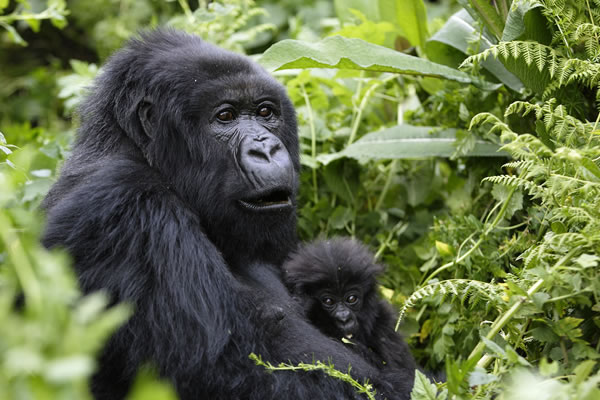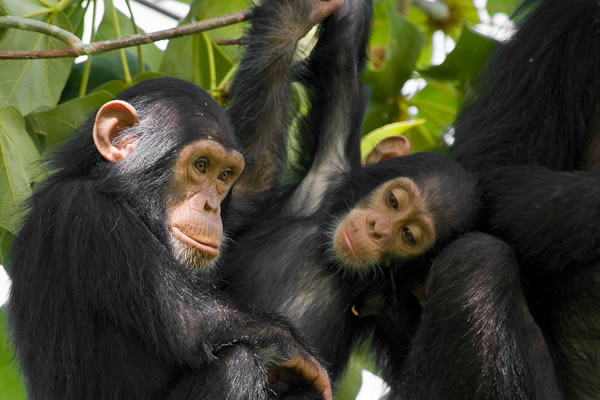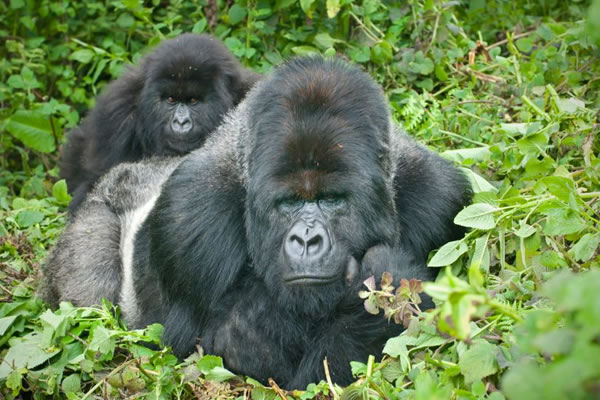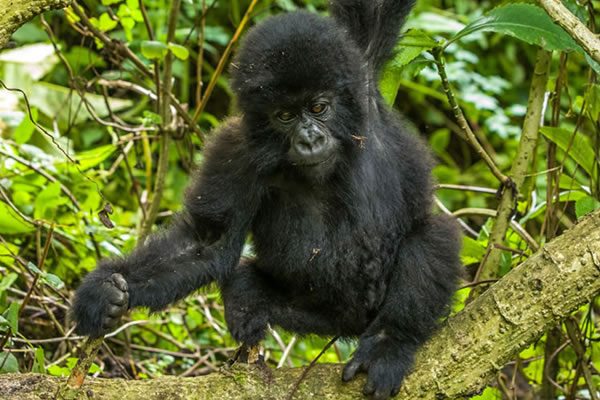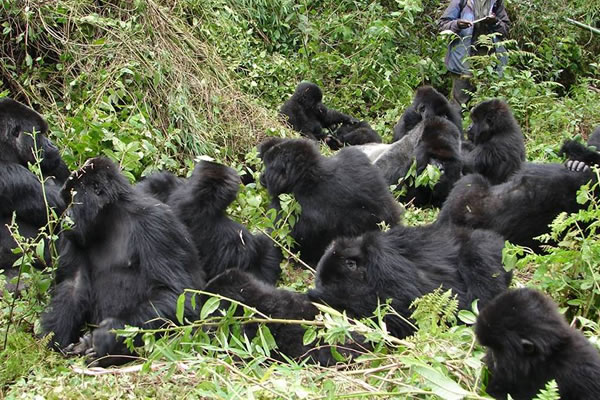Gorilla Tours in Uganda, Rwanda and DRC
Gorilla tours grants travelers a great chance to meet the shy endangered ground dwelling herbivores Mountain Gorillas habited in its Jungles. Uganda is listed among the top three countries. Which provide habitat to the shy endangered ground dwelling Mountain Gorillas in the World.
Gorilla Species are ground dwelling herbivores apes. Which usually feed on grass, young bamboo shoot and stem, tree leaves, insects. Fruits like mangoes, oranges, avocados, jack-fruit, grapes and more. These apes usually live in groups known as Gorilla families. Which comprises of male and female infants, juveniles and infants. Each Gorilla family is led by the male dominant Silver-back.
Furthermore, Uganda is ranked among the top three to be hosting the biggest percentage of the World’s remaining Gorilla population. With almost half of it habited in its two major tourist sites which include Bwindi Impenetrable National Park. And Mgahinga Gorilla National Park. Other parks for gorilla trekking include volcanoes national park of Rwanda and Virunga national park of DR.C
Gorilla sub-species

There are four gorilla sub-species-Mountain gorillas, Eastern Lowland gorillas, Western lowland gorillas and Cross River Gorillas. That belong to two main species-Eastern and Western Gorillas.
The mountain gorillas are found in three East-Central African countries of Democratic Republic of Congo, Rwanda and Uganda. With a total population of about 1080 individuals distributed in two separate locations-Bwindi National Park of Uganda and Sarambwe Nature Reserve of DRC. As well as the Virunga mountain slopes that include Mgahinga National Park in south-west Uganda. Virunga National Park of Congo and Volcanoes National Park of Rwanda.
Additionally the western lowland gorillas are the most populous with their World population ranging. From 100,000 to 150,000 individuals within several African countries. That for instance Angola, Gabon, Central African Republic, Republic of Congo, Cameroon and Equatorial Guinea.
With a population of about 3000 individuals, the Eastern lowland gorillas are only found in the Democratic Republic of Congo. The Cross River Gorillas are the least populous. With numbers ranging between 250 and 300 individuals in Nigeria and Cameroon.
Physical characteristics
Gorillas are so far the largest living Great Apes with heavily-built bodies, wide chests and shoulders as well as big hands and forearms. Although are they are shorter than the upper arms. These Giant Apes are characterized by black and hairless faces, small eyes that are closer to each other and large protruding nostrils.
Adult male gorillas are distinctively marked by lateral crests along the midline of their skulls. Besides featuring a saddle of silver-grey hair hence the name “silverbacks. Of the two gorilla species, the western gorillas generally have shorter fur with reddish/brown hair on their foreheads while eastern gorillas have longer and darker fur, especially on arms.
The Great Apes weigh over 440 pounds for males while the females weight only half of this weight. When it comes to height, these creatures measure up to 2 feet while standing
Gestation and Reproduction
Female gorillas reach sexual maturity by 8-9 years, although begin reproducing until 10-12 years while the male gorillas are sexually mature by 11-13 years yet breeding begins by 14-15 years. Like humans, the gestation period of gorillas is 8.5 months and a single birth is expected. The baby stays in the mother’s care until 4-6 years when weaning takes place and they begin making their own nests. A female gorilla usually delivers 4-6 young ones during her entire reproductive life and it is this factor combined with the high infant mortality that gorilla populations grow slowly and the species are threatened, endangered or critically endangered. Baby gorillas are born weighing 4 pounds, which is half the weight of human babies.
Social structure
Gorillas are one of the most sociable Great Apes with well-developed and stable units in form of families/groups, headed by a dominant silverback for several years. These families vary in terms of size, food abundance and habitat composition, between 5 and 30 members. Besides the dominant silverback, there are other subordinate silverbacks, adult females, sub-adult females, sub-adult males (blackbacks) and several infants.
Diet
Gorillas are primarily herbivorous and their menu is mainly made up of succulent leaves, varieties of fruits, stems, tree barks, bamboo shoots and invertebrates. Additionally, expect them to consume termites, grubs, caterpillars, Ants and snails. The western lowland gorillas have a unique feeding habit and their diet comprises mainly fruits although they are also said to have the capability of breaking open termite mounds to consume the larvae. Uganda offers the best Gorilla Tours, book your safari today with mum and dad Uganda tours have your dreams come true!

